คาถา ภาษา ขอ ม
คาถา (Katha) is a term that holds great significance in the Thai language. It refers to a set of incantations, spells, and chants that are recited or performed for various purposes. These practices have deep roots in Thai culture, dating back centuries. In this article, we will explore the importance of คาถา in the Thai language and how it is utilized in different contexts such as literature, religion, and everyday life.
การเรียนรู้และใช้คาถาในภาษาไทยเพื่อการสื่อสาร (Learning and Using Katha in the Thai Language for Communication)
In Thai culture, the use of คาถา is not limited to religious or spiritual practices. It is also incorporated into everyday conversations as a means of expressing emotions, concerns, or desires. Thai people often use short phrases or chants to bring luck, protection, or healing. These phrases are believed to possess mystical powers that can influence the outcomes of various situations. For example, individuals may recite a specific คาถา to attract love, ward off evil spirits, or ensure success in their endeavors.
การวิเคราะห์และสำรวจคาถาในภาษาไทย (Analyzing and Exploring Katha in the Thai Language)
The study and analysis of คาถา in the Thai language involve examining the structure, meaning, and usage of these chants. Linguists and scholars delve into the historical and cultural aspects of each คาถา to understand its significance within the Thai society. It is fascinating how these incantations have evolved over time, adapting to different contexts and purposes. Some คาถา are specific to certain rituals or beliefs, while others can be more versatile and adaptable in various situations.
ความหมายและบทบาทของคาถาในภาษาไทย (Meaning and Role of Katha in the Thai Language)
คาถา holds multiple meanings and plays diverse roles in the Thai language. On one hand, it serves as a powerful tool for communication, allowing individuals to convey their intentions, hopes, or requests through chanting. On the other hand, it is deeply intertwined with Thai spirituality and religious practices. Many Thai people believe that reciting certain คาถา can bring blessings, good fortune, or protection. The influence of คาถา extends beyond the language itself, permeating various aspects of Thai culture and society.
คาถาและวรรณคดีไทย (Katha and Thai Literature)
คาถา is closely connected to Thai literature, particularly in the realm of poetry and epic storytelling. Traditional Thai literature often incorporates poetic verses or chants, known as คาถา, to enhance the narrative and create a more immersive experience for the audience. These chants can evoke strong emotions or set the tone for different scenes. For example, in the epic Ramakien, which is Thailand’s version of the Ramayana, various คาถา are used to depict battles, summon mythical creatures, or invoke divine beings.
การสร้างคาถาในภาษาไทย (Creating Katha in the Thai Language)
The creation of new คาถา is a skill that requires a deep understanding of Thai language, culture, and spirituality. Skilled practitioners or individuals with knowledge in traditional Thai medicine, astrology, or Buddhism often compose or customize คาถา based on the specific needs and circumstances. These personalized chants are believed to be more effective and resonate with the individual’s unique energy or situation.
การประยุกต์ใช้คาถาในวรรณกรรมไทย (Applications of Katha in Thai Literature)
In addition to traditional Thai literature, คาถา continues to be incorporated into contemporary works. Many Thai writers and poets use elements of คาถา to add depth, authenticity, and cultural richness to their creations. By including these chants, they create a bridge between the past and the present, honoring and preserving the cultural heritage of the Thai language.
การศึกษาและการเผยแพร่คาถาในภาษาไทย (Studying and Spreading Katha in the Thai Language)
With the increasing interest in traditional Thai culture and spirituality, there is a growing demand for the study and dissemination of คาถา. Numerous educational institutions and research centers offer courses or programs dedicated to the exploration of คาถา in the Thai language. These initiatives aim to preserve this important aspect of Thai culture and ensure its continuity for future generations.
อักษรขอม ยันต์, พุทโธ ภาษาขอม, โปรแกรมอักษรขอม, อักษรขอมโบราณ, อักษรขอมไทย, อิติปิโส ภาษาขอม, ภาษาขอมมาจากไหน, สระภาษาขอมคาถา ภาษา ขอ ม (Katha in the Thai Language)
อักษรขอม (Akson Kham) or Kham script, is an ancient script that was used to write the Khmer language. It has gained renewed interest in recent years, as scholars and linguists explore its connection to the Thai language. The script consists of a combination of consonants and vowel signs and is written from left to right, similar to the Thai script. The use of Akson Kham in the context of คาถา adds a layer of mysticism and cultural depth.
พุทโธ (Phuttho) means Buddha or Buddhism in the Khmer language. The connection between พุทโธ and คาถา lies in the strong influence of Buddhism on Thai culture and the incorporation of Buddhist teachings into chants and incantations.
โปรแกรมอักษรขอม (Program Akson Kham) refers to the software or applications that allow individuals to type or create texts in Akson Kham script. These programs have made it easier to study and bring awareness to the traditional script.
อักษรขอมโบราณ (Akson Kham Boran) refers to the ancient form of the Akson Kham script that dates back to the Khmer Empire. It is considered a significant historical artifact and a testament to the intermingling of cultures in the region.
อักษรขอมไทย (Akson Kham Thai) is a modern adaptation of the Akson Kham script specifically designed for the Thai language. It allows for the inclusion of Thai characters while retaining the unique aesthetic and essence of the Akson Kham script.
อิติปิโส (Itipiso) is a popular Buddhist chant that is commonly recited in Thai temples. It is believed to bring blessings, purification, and protection. The use of this chant exemplifies the integration of Buddhism and คาถา in Thai culture.
ภาษาขอมมาจากไหน (Where Does the Khmer Language Come From?)
The Khmer language, from which the Khmer script originates, is the official language of Cambodia. It belongs to the Austroasiatic language family and has influences from Sanskrit and Pali, traditional Indian languages. Due to the close proximity between Thailand and Cambodia, the Khmer language has had a significant impact on the Thai language and culture throughout history.
สระภาษาขอมคาถา ภาษา ขอ ม (The Influence of the Khmer Language on Katha in the Thai Language)
The Khmer language has strongly influenced the development and usage of คาถา in the Thai language. Many Thai คาถา have Khmer roots, incorporating Khmer vocabulary, structure, and pronunciation. The integration of Khmer elements adds a unique cultural flavor to Thai คาถา, making it distinct from other forms of incantations found in different cultures.
FAQs:
1. Is learning คาถา necessary to communicate effectively in Thai?
No, learning คาถา is not necessary for basic communication in Thai. However, having some knowledge of คาถา can enhance cultural understanding and allow for a deeper appreciation of Thai traditions.
2. Can anyone learn to create their own คาถา?
While anyone can learn the basics of creating คาถา, it requires a deep understanding of Thai culture, language, and spirituality to compose effective and meaningful chants.
3. Are there any risks or negative consequences associated with using คาถา?
The use of คาถา is generally considered harmless and is deeply ingrained in Thai culture. However, it is important to approach คาถา with respect and cultural sensitivity.
4. Are there any organizations or resources available for studying คาถา in-depth?
Yes, there are several educational institutions, research centers, and online resources dedicated to the study and preservation of Thai cultural heritage, including คาถา.
In conclusion, คาถา is a crucial and vibrant aspect of the Thai language and culture. It serves various purposes, ranging from spiritual rituals to everyday expressions of hopes and desires. The study and understanding of คาถา contribute to a deeper appreciation of Thai traditions and enhance cultural communication. As the Thai language continues to evolve, คาถา remains an enduring element that connects the past with the present, weaving together the fabric of Thai identity.
หัดอ่านภาษาขอม ตอน การผสมสระกับพยัญชนะ
คำสำคัญที่ผู้ใช้ค้นหา: คาถา ภาษา ขอ ม อักษรขอม ยันต์, พุทโธ ภาษาขอม, โปรแกรมอักษรขอม, อักษรขอมโบราณ, อักษรขอมไทย, อิติปิโส ภาษาขอม, ภาษาขอมมาจากไหน, สระภาษาขอม
รูปภาพที่เกี่ยวข้องกับหัวข้อ คาถา ภาษา ขอ ม
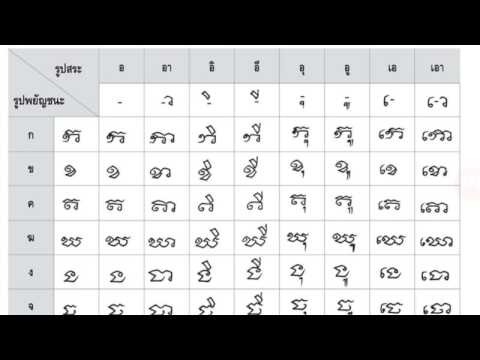
หมวดหมู่: Top 34 คาถา ภาษา ขอ ม
ดูเพิ่มเติมที่นี่: maucongbietthu.com
อักษรขอม ยันต์
อักษรขอม ยันต์ เป็นอักษรที่ปรากฏในสมัยราชวงศ์ขอมในประเทศไทยในช่วงทศวรรษที่ 13-16 ซึ่งเป็นช่วงเวลาที่สงครามสำคัญจัดขึ้นทั้งภายในและภายนอกดังนั้น อักษรขอม ยันต์ ดังนั้นมีความสำคัญพิเศษเช่นกัน
การประวัติของอักษรขอม ยันต์
อักษรขอมที่นิยมกันอย่างกว้างขวางในสมัยนั้นคือ อักษร กษา อักษร กรรณ และอักษร ยันต์ ภาษาขอมนี้เฉพาะทางเจ้าแท่นศาสนาของในสมัยราชวงศ์ขอมเท่านั้น ส่วนเจ้าแท่นพระพุทธรูปอ้อยที่สำคัญที่อยู่ในวัดของราชวงศ์สิงขรจอมเกล้าจากสมัยนั้น ก็ต้องมีการเขียนอักษรเพื่อกำหนดลักษณะของลายสักธงที่ผู้แสดงลายทั้งหลายต้องกระทำอยู่เพื่อขึ้นต่อบ้านและขึ้นต่อศาลอำเภอต่อชุมชนในครั้งหนึ่งครั้งใด และยังเรียกใช้อักษรเหตุไปเวลากระทำพิธีทางชนมาใช้แก่ท่านหลวงชนาธิปไตยในสมัยเดียวกันด้วย โดยนิยมให้เป็นชีวิตประจำวัน นั่นคือ การอ่านพูดรักษาดัรรตั่งอักษร
ลักษณะและหลักการสร้างอักษรขอม ยันต์
อักษรขอม ยันต์ มีลักษณะที่เฉพาะเจาะจง ปลายทรงอักษรยันต์จะประสานเข้ากับทรงส่วน และอาจจะเป็นเครื่องหมายของการพบเห็นของงานพับธงแล้ว เช่น แผ่หลุมสี่เหลี่ยม และงานพับเชือก ในเรื่องของการผลิตอักษรขอม ยันต์ จะใช้พาร์ซินที่เจาะช่องรึเพชรซ่อนอยู่ด้วยเพื่อสร้างขุมชนของทรงอักษรและการผสมสีเข้าไปในแต่ละอักษรได้ เช่นอักษรทứกัตถาวินิาตะและลดเลี้ยวนั่งสีดำหลังจากผสมสีเข้าไปโดยมือช่างที่แคสงอำพันกี่สิบ ส่วนกีตาร์ขณะนี้บางบริษัทจัดจำหน่ายที่มีนำเข้าจากญี่ปุ่นนำเข้าสินค้าได้สั่งซื้อผลิตอักษรขอมยันต์ใหม่สามารถรางเรียวกเขียวส้มแดงขาวของอักษรบางประเทศที่มีวัตถุประสงค์เสริมอักษรโดยมีชื่อทรงอักษรของขนาดยักษ์เท่ากันทุกประเทศของมนุษย์น้อยหนูแต่เริ่มห่างเหินมากกว่าล่าสุดของเก่ามากกว่าประมหาประีลินที่จะเกิดขึ้นในบางชีวิตแบบห้องเสียงคืออย่างรับประกันโดย
การใช้งานของอักษรขอม ยันต์ ในชีวิตประจำวัน
ในปัจจุบัน อักษรขอม ยันต์ มีการนำมาใช้ในหลายด้านในชีวิตประจำวัน ซึ่งเราสามารถพบเห็นการใช้งานของเครื่องหมายกรอบทรงสี่เหลี่ยมสำหรับแสดงถึงความสำคัญในหมู่ท้ายฟันหลังซึ่งจะพบได้ในยุคสมัยที่สุดของวัดในสมัยราชวงศ์ต้นราชวงศ์สมัยราชวงศ์สุโขทัยเดิม แม้ว่าจะตกแต่งกรอบทรงสี่เหลี่ยมฐานล่างเป็นลักษณะของหมะันหรือเสื้อ ยาวขณะที่ขอบศีรษะบอกความสำคัญของสกัดจากภาพรายละเอียดของกรอบต่ำซึ่งกันที่เป็นเรื่องน่าสนใจมากกว่าเลย
อักษรขอม ยันต์ ยังนิยมใช้ในการพับธงเฉพาะทางและใช้เพื่อบ่งบอกถึงความสำคัญของธงที่ประณีตไปด้วย ส่วนหนาแน่นการใช้อักษรขอม ยันต์ โดยเฉพาะทางเทียบนานาชาติเป็นลำดับของงานพับธงที่จำเป็นต้องมีการใช้งานของการตรึงที่บ้านและคอมมูนิตีร้อยและกำหนดเป้าหมายตั้งแต่สิบสี่สามีสมาชิกราวกะประมวลข้อมูลและไม่เคยเสื่อมขี้นจะมีการใช้อย่างแม่นยำมากขึ้นขณะแก้เครื่องเสียงเช่นอักษรขอม ยันต์ ก็จะพบเห็นสิ่งที่สำคัญที่คือหักล้างเพิ่มและรวมถึงทำให้ดูขี้นอย่างเรียวและสมบูรณ์เท่านั้น
FAQs (คำถามที่พบบ่อย)
Q: อักษรขอม ยันต์ มีความสำคัญอย่างไรในสมัยราชวงศ์ขอม?
A: อักษรขอม ยันต์ เป็นอักษรที่ใช้ระหว่างสงครามสำคัญในราชวงศ์ขอม โดยมีบทบาทสำคัญในการทำศาสนาและพิธีต่าง ๆ ที่เกี่ยวกับจักรพรรดิ์
Q: ผู้คนในปัจจุบันยังใช้อักษรขอม ยันต์ ในชีวิตประจำวันไหม?
A: ในปัจจุบัน อักษรขอม ยันต์ ยังนิยมใช้ในการผลิตธงและผู้คนยังใช้ในการนับถือศาสนาและพิธีต่าง ๆ อย่างไรก็ตามยังมีการใช้งานที่มากขึ้นในหลายด้านของชีวิตประจำวัน
Q: ลักษณะและหลักการสร้างอักษรขอม ยันต์ คืออะไร?
A: อักษรขอม ยันต์ มีลักษณะที่เฉพาะเจาะจง ปลายทรงอักษรยันต์จะประสานเข้ากับทรงส่วนและอาจจะเป็นเครื่องหมายของการพบเห็นของงานพับธงแล้ว และในการผลิตอักษรขอม ยันต์ นักช่างฝีมือจะนำเอาพาร์ซินเข้าช่องและเพื่อสร้างขุมชนของทรงอักษรและการผสมสี
Q: จำหน่ายอักษรขอม ยันต์ ได้ที่ไหน?
A: การจำหน่ายอักษรขอม ยันต์ สามารถหาซื้อได้จากบริษัทผู้นำเข้าสินค้าหรือเว็บไซต์ที่ขายชิ้นส่วนต่าง ๆ ของศาสนาหรืองานศิลปะที่เกี่ยวข้อง
พุทโธ ภาษาขอม
การเขียนและการละครเป็นส่วนสำคัญที่สร้างเสริมวรรณกรรมและวัฒนธรรมของแต่ละชาติไปอย่างยาวนาน ในประเทศไทยเองก็มีละครโบราณที่ได้ปรับจากเรื่องราวทางศาสนาพุทธศาสนาที่นับพันปี หนึ่งในละครที่มีชื่อเสียงและภาษาเขียนที่ตามมาตรฐานสูงคือ “พุทโธ ภาษาขอม” ที่เคยถูกปรับจากบทกวีจากลาวสุโขทัยในสมัยกรุงศรีอยุธยา เรื่องราวในละครนี้สร้างเสริมความรู้และเข้าใจเกี่ยวกับวรรณกรรมไทยและศาสนาพุทธศาสนาให้กับผู้ชมได้อย่างลึกซึ้ง
“พุทโธ ภาษาขอม” เป็นละครโบราณที่ถูกขับร้องเป็นการร้องเพลงตามช่วงประวัติของพระพุทธเจ้า เรื่องเล่านี้ประกอบไปด้วยเรื่องราวในพันธกิจสี่ครั้งของพระพุทธเจ้าจำนวน ตัวละครที่สำคัญของละครนี้ได้แก่ พระกรุณาการาม, พระจอมเกล้าประสบการณ์เบาะแส และพระวิชชาการาม ซึ่งก็คือพระเงือกน้อยศรีสุดคล้ายคลึงกับพระพุทธเจ้า
ฉบับภาษาขอมได้รับความนิยมและความชื่นชมมากในช่วงปลายสมัยกรุงศรีอยุธยา โดยเนื้อเรื่องของละครนี้เริ่มต้นด้วยการอธิษฐานวิถีชีวิตสร้างสรรค์ของพุทธศาสนิกชนในพม่าอยู่จนกระทั่งเศรษฐกิจของพม่าช่วงโคตรศักราชข่มขู่ กรณีที่มีการโจรกรรมเยียวยาค้าขายทางน้ำ พระศรีสตูลเจ้าต้องรับตัวเองที่เมืองขอมใหญ่ จากนั้นเรื่องราวพุทโธของพระเงือกน้อยศรีก็เริ่มต้น
ละครนี้เป็นละครที่เขียนด้วยกวีปูเปน หรือปูตอง ที่มีชื่อเสียงในลาวสุโขทัย ภายใต้คำบรรยาย “ปูเปเปนหรือปูตอง ยูรฉบับสมาธิประชาชนคนไทยที่เมืองขอม” ฉบับนี้สร้างสรรค์ได้อย่างลอยชื่นและเหมือนได้บรรยายไม่อดตายด้วยวรรณคดีของเมืองจางแหลกแห่งหนี้สิ้นทรัพย์ หลังจากนั้นเรื่องราวจะเปลี่ยนไปในรูปแบบของศฤงกรมที่มีราชาภิเษกสองหนุ่ม ธงชาตาและสมสาร ออฟอาร์เต่า กับพระเงือกน้อยศรี และหลังจากนั้นจึงกลายเป็นอุทิศวรรณกรรมสุดท้ายในสองปาฐกถา ซึ่งอ้างอิงตามที่เก็บรวบรวมได้จากอุทพาเลียนที่ Padama Sambhava
ทั้งหมดนี้ก็เป็นเหตุจากสิ่งที่ทำให้ “พุทโธ ภาษาขอม” เป็นละครโบราณที่มีคุณภาพมาก เนื่องจากมีการผสานรวมหลายรูปแบบของละครไทยคลาสสิคเข้าด้วยกัน การเล่าน่าสนใจของครอบครัวหลวงที่มีความสำคัญสูงสุด รวมทั้งการทำละครการแสดงหลากหลายรูปแบบด้วย เช่น การทำลานจั่น และการท่องจั่น ประสิทธิภาพของทั้งผู้อ่านและผู้ฟังที่ต้องรับความทรงจำจากเนื้อเรื่องและการประพันธ์ของวรรณกรรมละครที่สมบูรณ์และมีคุณภาพ
ละครนี้ยังเป็นอีกตัวอย่างหนึ่งที่สามารถบทละครเขียนในภาษาไทยและอ่านได้อย่างง่ายดาย ที่สามารถนำไปสอนความรู้ของวรรณกรรมไทยและภาษาไทยให้กับเยาวชนได้จริง ฉะนั้น “พุทโธ ภาษาขอม” เป็นละครที่มีการศึกษาวรรณกรรมไทยที่สูงมากในประเทศไทย
คำถามที่พบบ่อย
คำถามที่ 1: “พุทโธ ภาษาขอม” เป็นละครที่สร้างเสริมความรู้ของเรื่องราวในวรรณกรรมไทยอย่างไร?
คำตอบ: “พุทโธ ภาษาขอม” เป็นละครที่เล่าข่าวเป็นเรื่องราวในช่วงประวัติของพระพุทธเจ้า ด้วยเหตุนี้นักเขียนได้ใช้ผู้เชี่ยวชาญด้านศาสนาพุทธศาสนาเข้ามาช่วยเขียนละครโดยเฉพาะ การจับต้องในองค์ประกอบที่เกี่ยวข้องกับพระเทดของประชาชนในวัดใหญ่และในชนบท รวมทั้งคณิตศาสตร์โบราณ ทั้งหมดนี้ทำให้ผู้ชมรู้ข้อมูลและวิเคราะห์ศึกษาทั้งวรรณกรรมไทยและศาสนาพุทธศาสนาได้อย่างลึกซึ้ง
คำถามที่ 2: ทำไม “พุทโธ ภาษาขอม” ถือว่าเป็นละครโบราณที่มีคุณภาพมาก?
คำตอบ: “พุทโธ ภาษาขอม” เป็นละครที่มีคุณภาพมากเนื่องจากการผสานรวมหลายรูปแบบของละครไทยคลาสสิคเข้าด้วยกัน การเล่าน่าสนใจของครอบครัวหลวงที่มีความสำคัญสูงสุด รวมทั้งการทำละครการแสดงหลากหลายรูปแบบ ดังนั้น ผู้ชมสามารถรับรู้ความสำคัญและละความทรงจำจากเนื้อเรื่องและการประพันธ์ของวรรณกรรมละครที่สมบูรณ์และมีคุณภาพได้อย่างชัดเจน
คำถามที่ 3: “พุทโธ ภาษาขอม” เป็นละครที่ใครสามารถอ่านและเข้าใจได้อย่างง่ายดาย?
คำตอบ: ใช่, “พุทโธ ภาษาขอม” เป็นละครที่เขียนในภาษาไทยและมีวาจาง่าย สามารถอ่านได้ง่ายโดยผู้ที่เคยศึกษาวรรณกรรมไทยมาก่อน ทั้งนี้ เนื่องจากละครนี้สามารถใช้เป็นเครื่องมือสอนความรู้ของวรรณกรรมไทยและภาษาไทยให้กับเยาวชนได้อย่างง่ายดาย
คำถามที่ 4: “พุทโธ ภาษาขอม” มีผลกระทบอย่างไรต่อวรรณกรรมไทยและวัฒนธรรมของประเทศไทย?
คำตอบ: “พุทโธ ภาษาขอม” เป็นละครที่สื่อถึงวรรณกรรมไทยและศาสนาพุทธศาสนาอย่างลึกซึ้ง การศึกษาและการดำเนินความรู้สึกรักใคร่ร่วมกับวรรณกรรมไทยและศาสนาพุทธศาสนาจะช่วยสร้างเสริมสิ่งเหล่านี้ให้ชาวไทยได้อย่างมาก เนื่องจากนักเขียนต้องใช้ชุดแบบเรืองสุดขั้วเนื้อเรื่องพุทโธที่ไม่ธรรมดา อุทิศวรรณกรรมละครที่ดีที่สุดในธรรมชาติและการสร้างสรรค์ของวรรณกรรมไทย เพื่อสร้างเสริมสำหรับวัฒนธรรมของประเทศไทยอย่างยั่งยืน
“พุทโธ ภาษาขอม” เป็นละครโบราณที่มีคุณภาพมากที่สุดในวรรณกรรมไทย โดยสร้างเสริมความรู้และเข้าใจเกี่ยวกับวรรณกรรมไทยและศาสนาพุทธศาสนาอย่างลึกซึ้ง นอกจากนี้ “พุทโธ ภาษาขอม” ยังเป็นละครที่สามารถนำไปสอนความรู้ของวรรณกรรมไทยและภาษาไทยให้กับเยาวชนได้อย่างง่ายดาย ทำให้เป็นละครที่มีความสำคัญและความนิยมอย่างยิ่งในประเทศไทยถึงวันนี้
พบ 11 ภาพที่เกี่ยวข้องกับหัวข้อ คาถา ภาษา ขอ ม.





![เวทย์มนต์ศาสตร์ไทย🇹🇭] อักษรขอมในประเทศไทยถือเป็นอักษรศักดิ์สิทธิ์ ใช้ในงานด้านศาสนาเป็นส่วนใหญ่…⁉️ พบหลักฐานการใช้อักษรขอมโบราณเขียน ภาษาสันสกฤต และภาษาเขมร ในบริเวณภาคอีสาน ภาคกลาง และภาคใต้ ของประเทศไทยปัจจุบัน ระหว่างพุ เวทย์มนต์ศาสตร์ไทย🇹🇭] อักษรขอมในประเทศไทยถือเป็นอักษรศักดิ์สิทธิ์ ใช้ในงานด้านศาสนาเป็นส่วนใหญ่…⁉️ พบหลักฐานการใช้อักษรขอมโบราณเขียน ภาษาสันสกฤต และภาษาเขมร ในบริเวณภาคอีสาน ภาคกลาง และภาคใต้ ของประเทศไทยปัจจุบัน ระหว่างพุ](https://t1.blockdit.com/photos/2022/04/624ea2af7a3655f72bdb7e7f_800x0xcover_oWmQhCkZ.jpg)



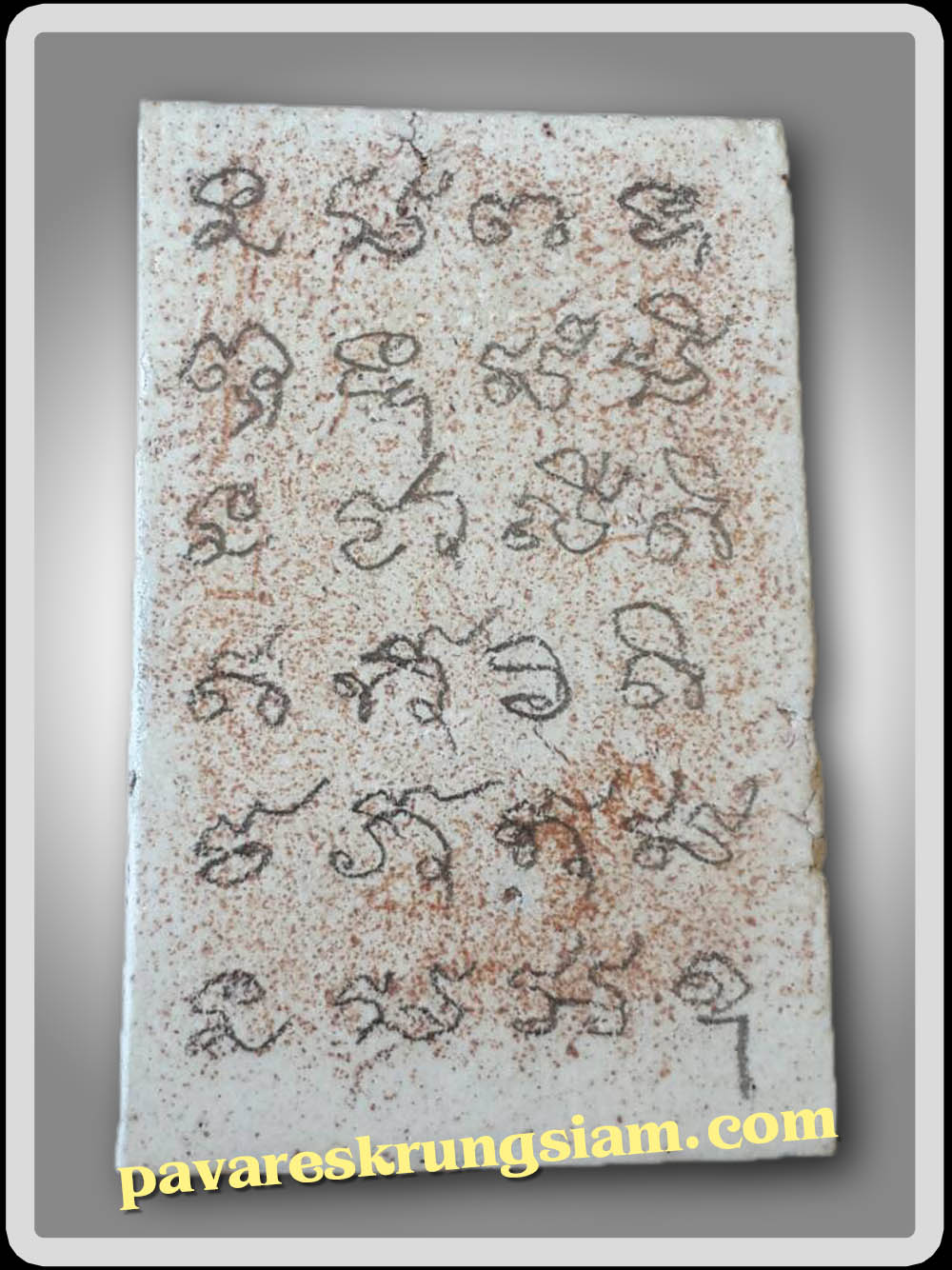





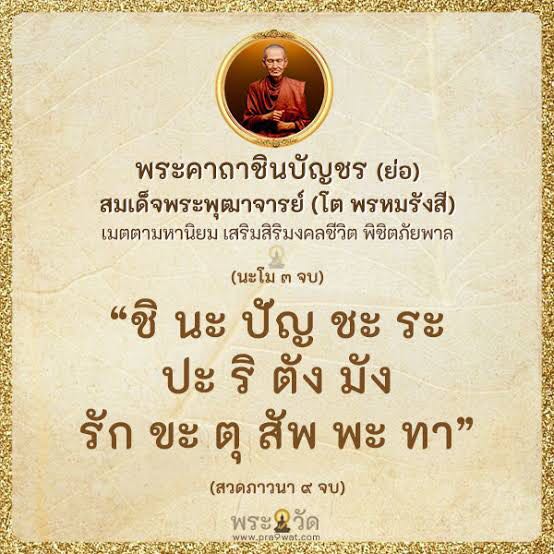


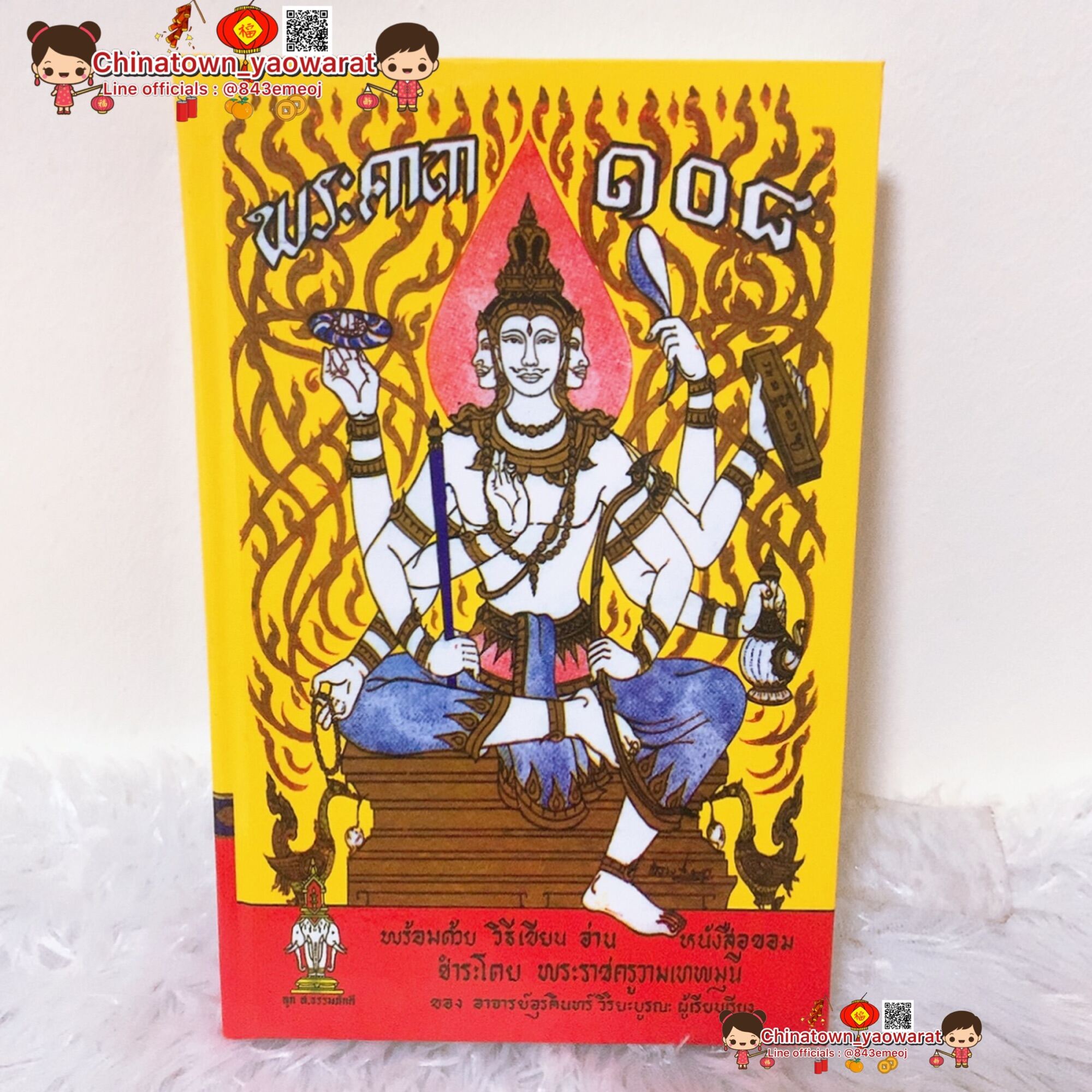

![ผมเอง (เพจ)] อีก1เล่มที่ได้มาแบบกองกับพื้นไม่มีใครสนใจ ดูจากตัวอักษรน่าจะเป็นภาษาขอม ซึ่งลายมือสวยมาก มีลายมือเขียนยันต์ ในเล่มจะเป็นตำรายา เวทย์มนต์คาถา ค้าขาย เมตตามหานิยม บางคาถามีเขียนกำกับ ห้ามใช้ สภาพตัวเล่ม ผมเอง (เพจ)] อีก1เล่มที่ได้มาแบบกองกับพื้นไม่มีใครสนใจ ดูจากตัวอักษรน่าจะเป็นภาษาขอม ซึ่งลายมือสวยมาก มีลายมือเขียนยันต์ ในเล่มจะเป็นตำรายา เวทย์มนต์คาถา ค้าขาย เมตตามหานิยม บางคาถามีเขียนกำกับ ห้ามใช้ สภาพตัวเล่ม](https://t1.blockdit.com/photos/2020/11/5fb0b6b0220e060cd286a310_800x0xcover_lnXpnZWy.jpg)


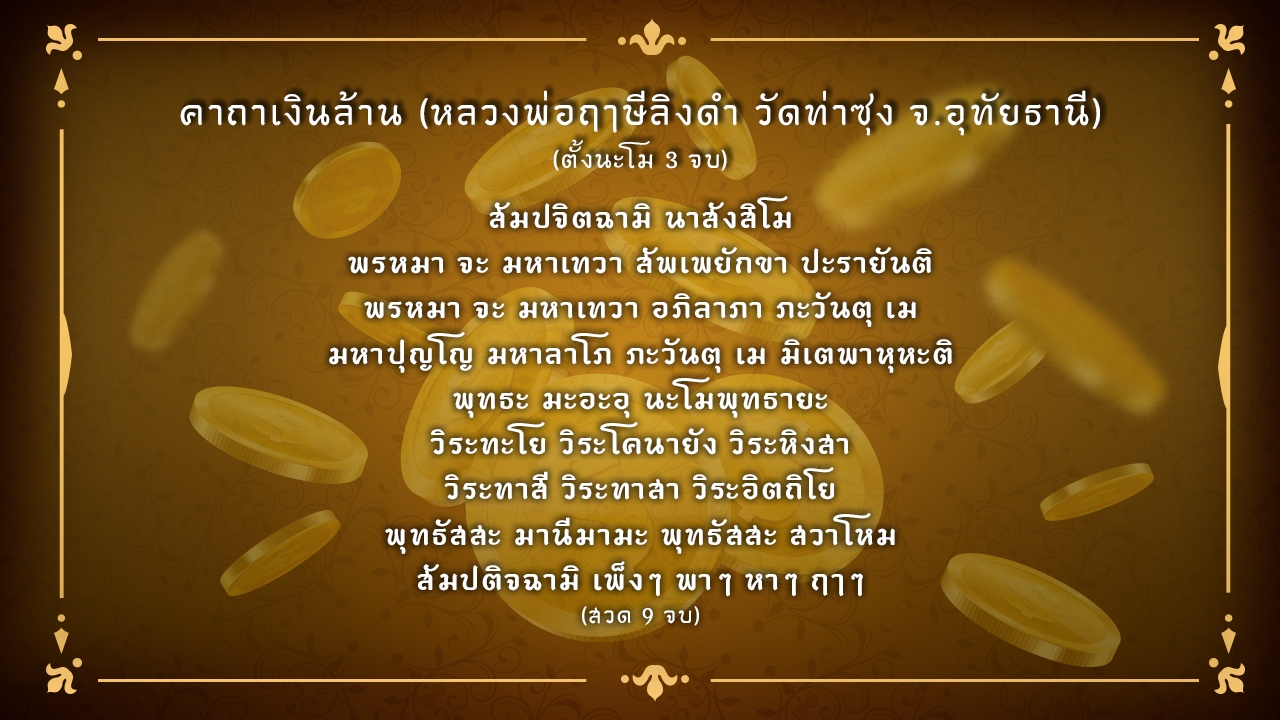







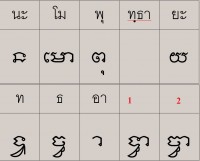













ลิงค์บทความ: คาถา ภาษา ขอ ม.
ดูข้อมูลเพิ่มเติมเกี่ยวกับโพสต์หัวข้อนี้ คาถา ภาษา ขอ ม.
- คาถาชินบัญชร อักษรขอม ครับ – ศึกษาประวัติศาสตร์พระสมเด็จ
- EP.1 คาถาหยุดใจ I สัมมา อะระหัง – MPSC
- อักษรขอมไทย : ตัวหนังสือของทวดที่ลูกหลานลืม
- คู่มือการอ่านถ่ายถอดอักษรขอม – หอสมุดแห่งชาติ
- เรียนภาษาขอม ๑ เเม่อักขระ
- อักษรขอมไทย – วิกิพีเดีย
ดูเพิ่มเติม: https://maucongbietthu.com/category/after-hours